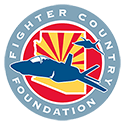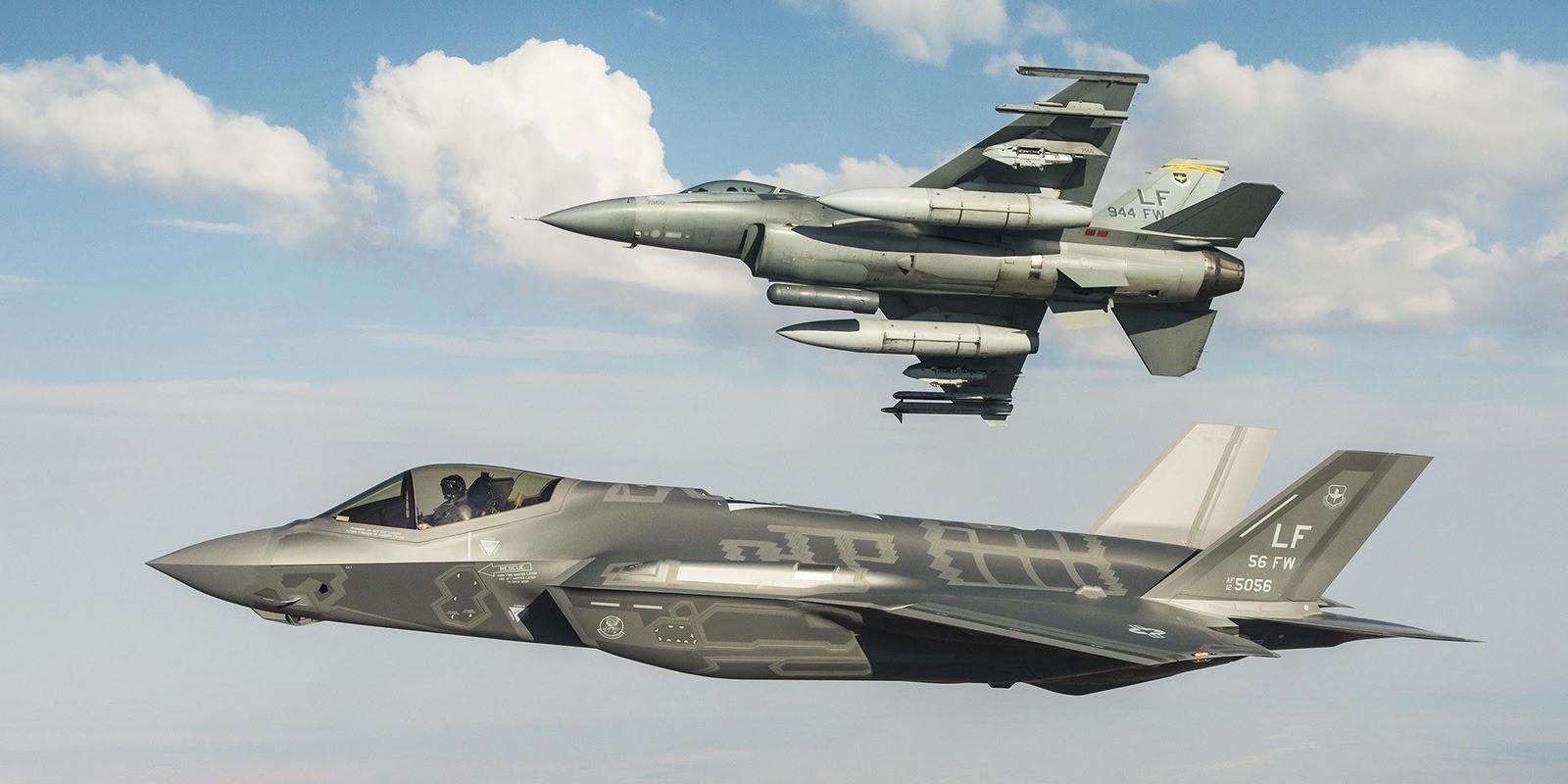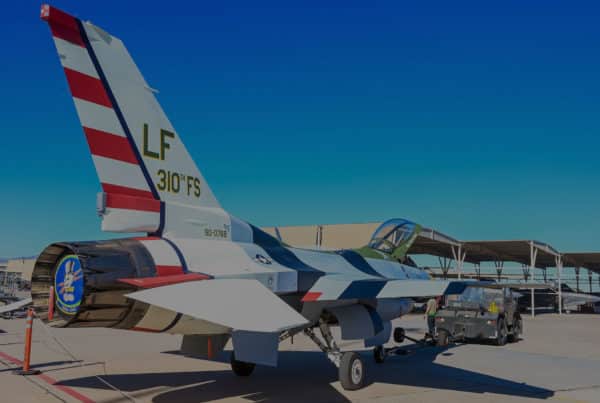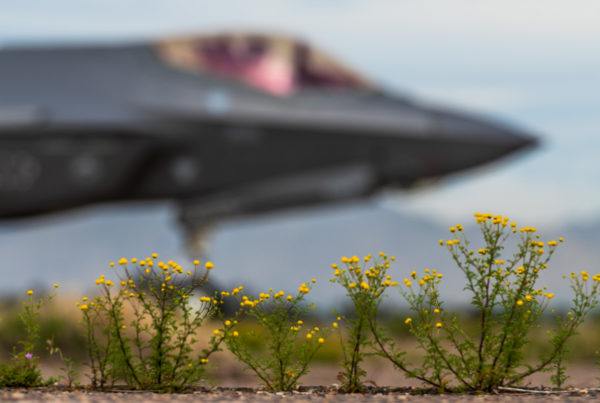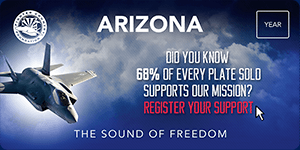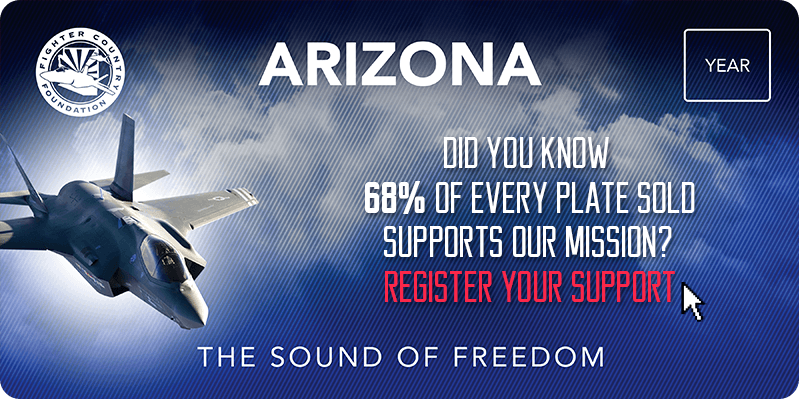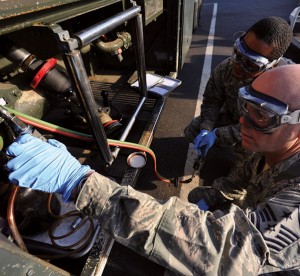
Chief Master Sgt. David Staton, 56th Fighter Wing command chief, and Staff Sgt. Kelvin Barnes, 56th LRS POL fuels lab NCO-in-charge, take a fuel sample for lab testing.
By SENIOR AIRMAN
KATE VAUGHN
56th Fighter Wing Public Affairs
One of the dirtiest jobs on base may be in the 56th Logistics Readiness Squadron Petroleum, Oil and Lubricant Flight.
Every time a jet takes off, it’s powered by fuel. But where does that fuel come from and how does it make it into the jets?
The POL flight is ready to respond around the clock in order to ensure each jet gets the fuel it needs. It all starts at the preventive refueling maintenance section where each of the 18 R-11 fuel trucks is inspected to ensure nothing malfunctions while delivering fuel to a jet.
Staff Sgt. Elijah MacLaren, 56th LRS refueling maintenance technician, said repairing the R-11s is the best part of the job.
The R-11s hold up to 6,000 gallons of fuel and can fuel four F-16s at a time. Here at Luke, POL issues about 120,000 gallons of fuel a day, supplying fuel for an average of 51 sorties a day, MacLaren said.
After fuel makes its way from supplier Kinder Morgan in Phoenix to Luke’s storage tanks via pipeline, and before it’s transferred to the trucks, it must be tested. Fuel is tested for color, water, solids, conductivity, icing inhibitor and flashpoint.
Once the fuel passes all the tests, it’s transferred into an R-11 and makes its way out to the flightline.
The newest addition to the POL team, Chief Master Sgt. David Staton, 56th Fighter Wing command chief, is on a mission to learn the dirtiest jobs on base.
“Well, it’s not an easy job to learn” MacLaren said, “but Chief Staton seems like a natural. He was eager and wanted to know everything there is to know about POL. With a little bit of practice, he’d fit right in.”
In Staton’s eyes, POL is a vital part of the 56th Fighter Wing mission.
“What we do here at Luke is extremely important — getting jets in the air and training the world’s finest fighter pilots,” he said. “I want people to understand exactly how those jets get there.”
